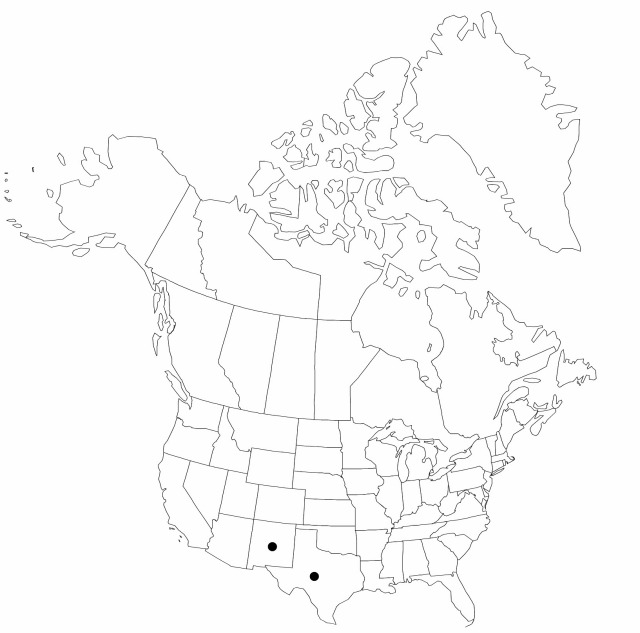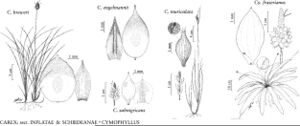Carex muriculata
Field & Lab. 17: 132. 1949.
Culms sharply trigonous, (10–)20–80 cm; bladeless basal sheaths brown, strongly fibrillose. Leaves: sheaths tight, pale green to reddish brown abaxially, whitish to brown stained and ± hyaline adaxially, glabrous; ligules 0.6–2.8 mm, rounded to obtuse; blades flat, convolute or revolute, 7–40 cm × 1–2.5(–3.3) mm wide, glabrous. Inflorescences oblong to linear-oblong, (1.6–)2.5–7 cm × 8–15 mm; proximal bracts leafy, 9–27 cm, sheathless, with prominent hyaline margins basally; distal bracts gradually reduced; spikes 3–6, distal 2 or 3 ± approximate, (5.5–)8–22 × (4.5–)5.5–11 mm. Pistillate scales with strongly 3-veined, green to brown center and whitish translucent sides, oblong-lanceolate, exceeding perigynia and mostly concealing them, apex awn, when present, to 2 mm, glabrous. Staminate scales oblong-lanceolate, apex acute or short acuminate. Perigynia, green or usually brown tinged, prominently 8–16-veined, (3.3–)3.5–4.6 × 1.4–1.8 mm, thick-coriaceous, granular-warty, white stellate-hirsute. Achenes obovoid to broadly-ellipsoid, 2–2.4 mm.
Phenology: Fruiting Apr–Sep.
Habitat: Rocky, dry slopes in calcareous soils
Elevation: 900–2200 m
Distribution

N.Mex., Tex., Mexico (Chihuahua, Coahuila).
Discussion
Carex muriculata, like almost all members of sect. Schiedeanae, grows in sites that are very dry for most of the year. During unusually dry years, plants can be quite depauperate and difficult to determine.
Selected References
None.
